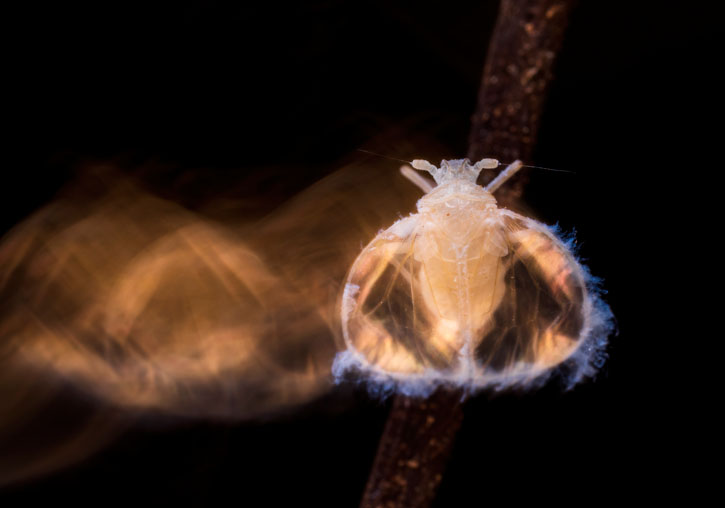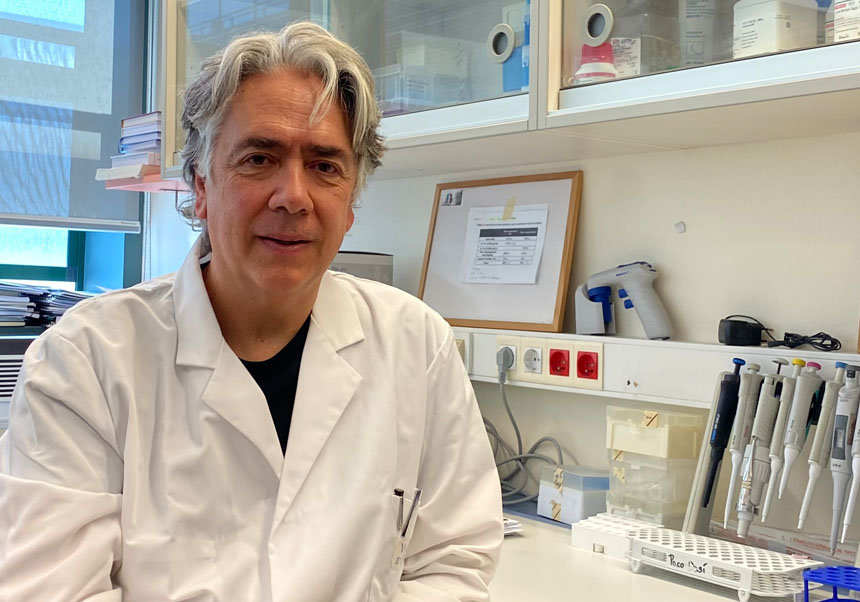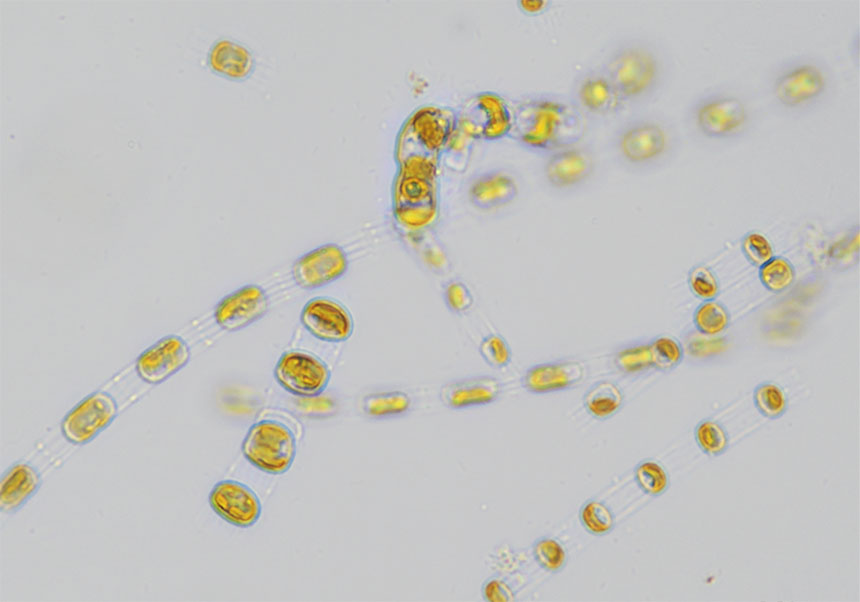The British Ecological Society awards researcher Roberto García Roa for his photograph of a newly discovered insect in Valencia
- Scientific Culture and Innovation Unit
- October 29th, 2021

The researcher of the Cavanilles Institute of Biodiversity and Evolutionary Biology of the University of Valencia Roberto García Roa has been awarded in the photo contest of the British Ecological Society with his image of a small insect recently discovered in Valencian caves, “the fairy of the forests”. This is the seventh consecutive edition in which this institution awards its photographs.
In the Municipal Natural Park of Les Rodanes de Vilamarxant (province of Valencia) there are many caves. In them, there is a small insect, less than half a centimetre in size, without eyes or pigmentation, Valenciolenda fadaforesta (Hoch & Sendra), recently discovered and in whose discovery participated, among others, the Museum of Natural History of the University of Valencia.
The photographer and researcher of Ethology at the Cavanilles Institute Roberto García Roa has managed to photograph it, which has earned him the position of runner-up in the Capturing Ecology competition of the British Ecological Society, the oldest ecological society in the world. The image, The fairy of the forest, is the result of a long exposure through which the author “sought to further emphasise the almost magical vision that accompanies the appearance of these tiny animals”. The photographic documentation of this species has taken the author several months and various expeditions to the underground world.
This is not the first time that the British Ecological Society has recognised the work of Roberto García Roa. With this it is already seven consecutive years in which he has been awarded in the contest. In 2019 he came first with his photograph Waiting, which showed an adult arboreal boa from Madagascar (Sanzinia madascariensis), one of the largest snake species on the island.
Valenciolenda fadaforesta, the 4 mm insect that he has managed to capture with its camera, is a cicada of the Kinnaridae family, of which no other species was known on the continent. Being underground for millennia has evolutionarily altered their pigmentation, as have their eyes, which have disappeared, giving it an almost fantastic appearance. Hence the name “forest fairy”, which is the origin of its scientific name (fairy, ‘fairy’; forest, ‘forest’). “I hope that photographs like this serve to highlight the conservation of cave ecosystems and the organisms that live in them”, says the author.
Roberto García Roa holds a PhD in Biology and is currently a researcher at the University of Valencia. An evolutionary biologist, conservation photographer and disseminator, he has received awards from institutions such as the Royal Society, EDC Natura, or the aforementioned British Ecological Society. Recently, he published an article in National Geographic talking about the discovery of the Valenciolenda fadaforesta.
Roberto García Roa website: www.robertogarciaroa.com
Annex photo caption:
- Roberto García Roa, Ethology researcher at the Cavanilles Institute.



















